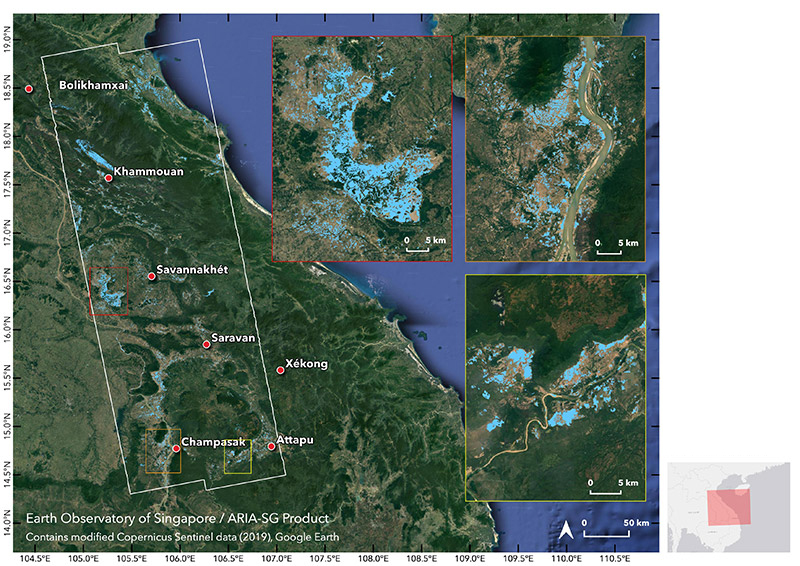ARIA-SG Project

The aims of this project are to use remote-sensing data to:
• Support regional and local stakeholders and decision makers by monitoring and mapping regional hazards, environmental crises, and natural disasters
• Develop cutting-edge algorithms for hazards monitoring and disaster mapping (e.g., using machine learning techniques).
In particular, we are using Synthetic Aperture Radar (SAR) to make timely maps of disasters (e.g., flood extents, building damage from earthquakes and typhoons) for post-disaster situations, and to provide routine monitoring of ground deformation that is related to potential hazards.
This project is in collaboration with the NASA Jet Propulsion Laboratory and Caltech, and uses their Advanced Rapid Imaging and Analysis (ARIA) system to process the SAR data in a cloud-computing environment.
Disaster-response maps from this project can be downloaded at:
http://ariasg-products.earthobservatory.sg/
Updates on our work, including posting of disaster-response products can be found at:
https://twitter.com/eos_aria
Funding Sources
- Earth Observatory of Singapore
- National Research Foundation
Project Years
2018, 2019, 2020